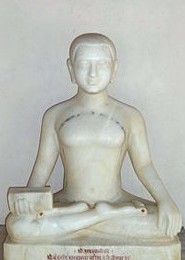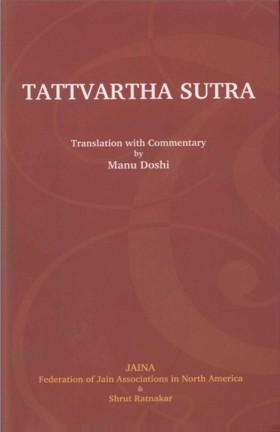04.11 Bhavanavāsino'surnāgvidyutsuparnāgnivatas-tanitodadhidweepdigkumārāh
| Audio: | |
| Sanskrit: | भवनवासिनोsसुरनागविद्युत्सुपर्णाग्निवातस्तनितोदधिद्वीपदिक्कुमाराः। |
| Hindi: | असुरकुमार,नागकुमार,विद्युतकुमार,सुपर्णकुमार,अग्निकुमार,वातकुमार, स्तनितकुमार,उदधिकुमार,द्वीपकुमार,दिक्कुमार ये (10)भवनवासी निकाय है। |
04.12 Vyantarāh Kinnarkimpurushmahoraggāndhar-vayaksharākshasbhootpishāchāh
| Audio: | |
| Sanskrit: | व्यंतराःकिन्नरकिंपुरुषमहोरगगान्धर्वयक्षराक्षसभूतपिशाचाः। |
| Hindi: | किन्नर,किंपुरुष,महोरग,गान्धर्व, यक्ष,राक्षस,भूत और पिशाच ये(8)व्यंतर निकाय है |
04.11-12
English: Of the four types of cosmic beings, Bhavanapatis and Vyantars do not actually reside in upper realms. Bhavanapatis stay underworld below and around the mountain Meru. They are called Bhavanpati, because they reside in vast mansions, which are termed as Bhavans. Since those beings are handsome, soft spoken, youthful and playful, they are known as Kumar. Their ten categories consist of
- Asurkumār (sinister youths),
- Nāgkumār (serpentine youths),
- Vidutkumār (lightening youths),
- Suparnakumār (eagle-like youths),
- Agnikumār (beaming youths),
- Vāyukumār, (sublime youths),
- Staniīkumār (resonant youths),
- Udadhikumār (serene youths),
- Dweepkumār, (islander youths) and
- Dikkumār (youths from different directions).
Those belonging to Vyantar group do not live in the constructed premises. They mostly stay within hills, mountains, forests, hollows of trees etc. in solitary and more or less deserted areas of Madhyalok and the first infernal level. Their eight categories consist of
- Kinnar (deformed humans),
- Kimpurush (deformed persons),
- Mahorag (great serpents),
- Gāndharva (musicians),
- Yaksha (demigods)
- Rākshas (demons),
- Bhoot (ghosts) and
- Pishāch (devils).
Most of them belong to the group of evil spirits. They have been treated as supernatural because of the fright arising from their capability to hurt.
 Acharya Umaswati
Acharya Umaswati
